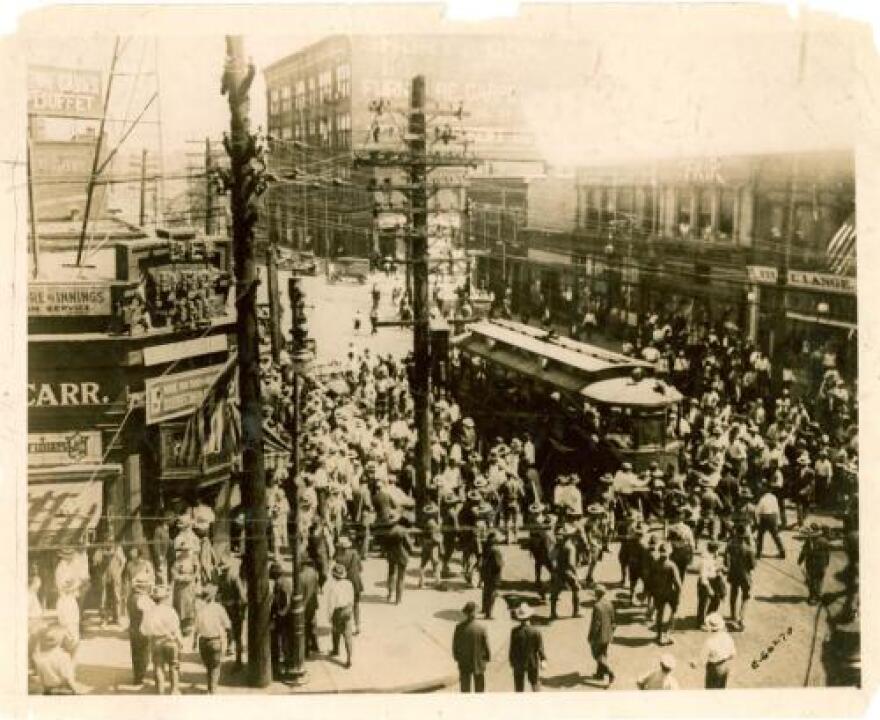On the 106th anniversary of the East St. Louis Race Massacre, two historical societies will dedicate a marker this weekend to commemorate it.
Located at Southern Illinois University Edwardsville’s East St. Louis campus, the new marker from the state will be unveiled by the East St. Louis and Illinois State historical societies in a Sunday ceremony. Event organizers say it’s important to understand what happened and how it shaped the region.
“This is critical information that needs to be shared throughout that community,” Jaye Willis, director of the East St. Louis Historical Society, said Thursday during an appearance on St. Louis on the Air. “Not just for the people that live there, but the people who educate people who live there.”
Even though the legacy of the 1917 massacre will forever be instilled in the city’s history, some East St. Louisans say many in the area don’t know enough about it.
“It's critical that this should be known in our schools,” said Reginald Petty, an 87-year-old East St. Louis resident whose grandfather told him stories about the massacre. “It should be a part of the school curriculum.”
The location of the marker is not random. Historians, like William Shannon, executive director of the St. Clair Historical Society, said some of the worst events in 1917 occurred in the neighborhood where the college campus currently sits.
Shannon said he also agrees with Willis and Petty: Even though the details of the story are difficult to hear, they are an important part of remembering the region’s history and the Civil Rights Movement.
“To get that understanding, you’re going to have to go to some tough places,” Shannon said.
White rioters, upset that industrial leaders hired Black workers to replace striking white workers, lynched, shot and burned innocent Black men, women and children. The rioters burned homes and drove hundreds of Black families from the town.
Although the official death toll stands at 48, many historians now believe hundreds died over the two-day riot in early July.
This marker is not the only in the city to remember the massacre. In 2017, on the 100th anniversary, local historians and community members put together 26 other historical markers throughout East St. Louis.
Representatives of the historical societies welcome all to the free community commemoration on Sunday. The 2:30 p.m. ceremony will take place at 601 James R. Thompson Blvd.








